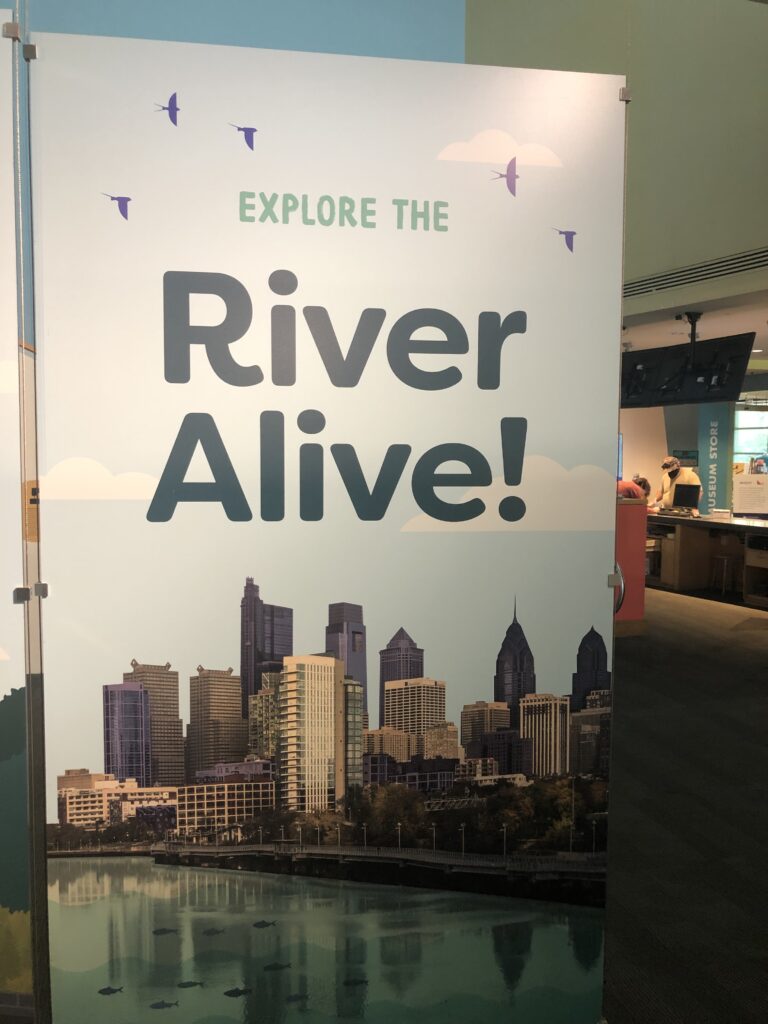
Philly museums highlight life downstream and on the Delaware
Visit the Science History Institute and Independence Seaport Museum
| September 27, 2022
Note: This is one part of a two-part series about exhibits at Philadelphia museums that focus on the Delaware River watershed, water quality and how to keep our rivers healthy and thriving.
For those interested in learning more about water protection and quality, particularly as it relates to the Delaware River, be sure to visit the Science History Institute and Independence Seaport Museum in Philadelphia.
An exhibit at the institute, “We All Live Downstream,” tells the story of how early settlers relied on waterways, including the Delaware, for industry and sanitation, to the point that they became overrun with pollution. The exhibit outlines the slow and painstaking efforts by public policy leaders and others over the centuries to reclaim the water.
As the exhibit notes, nutrients, bacteria, chemicals and other natural and manmade debris make their way through pipes, streams and rivers.
“Water is an effective medium for absorbing, carrying and distributing chemical and biological agents that threaten the health of humans, aquatic life and our larger environment,” it said. “How do we protect water – and ourselves – from such threats?”

At some points, you can almost smell what the exhibit is evoking.
It notes that pits used as household toilets would overflow into basements and backyards and the industrial wastes from making candles, soap and leather were dumped into the Delaware.
Added to that, Philadelphia’s bustling port “reeked of rotting garbage at low tide,” it said.
“Horses, cows, dogs and pigs filled the street, making the messes that live animals do,” it added. “Dead animals were often left to rot.”
After an outbreak of yellow fever in 1793, the city began tackling its waste and water issues.
The exhibit then traces the efforts in the 1930s and 40s to tighten restrictions on the disposal of coal waste. From 1945 to 1955, 30 million to 40 million tons of coal waste were dredged from the Schuylkill River, according to the institute.

Through displays of old posters and scientific instruments, the exhibit explores how Pennsylvania made strides in combating pollution, the rise of the environmental movement in the 1970s, the creation of the U.S. Environmental Protection Agency as well as the Delaware River Basin Commission.
“We All Live Downstream,” which is free to visit, runs through July 31, 2023.
A little more than a mile away is the Independence Seaport Museum, which hosts an exhibit called “River Alive!”

This exhibit is very kid friendly but adults can come away learning a thing or two as well!
Among the displays are interactive kiosks that show you the effects of pollution or other negative influences on aquatic life and what can be done to mitigate them.
An interactive video game broadcast on a 32-foot-long Continuum Wall has five “input” stations that display how mountains, wilderness, farmland, cities, and coastal plains are all connected by the river that runs through them.
Visitors can also take a personality quiz where you can discover which river animal is your “spirit animal.”








